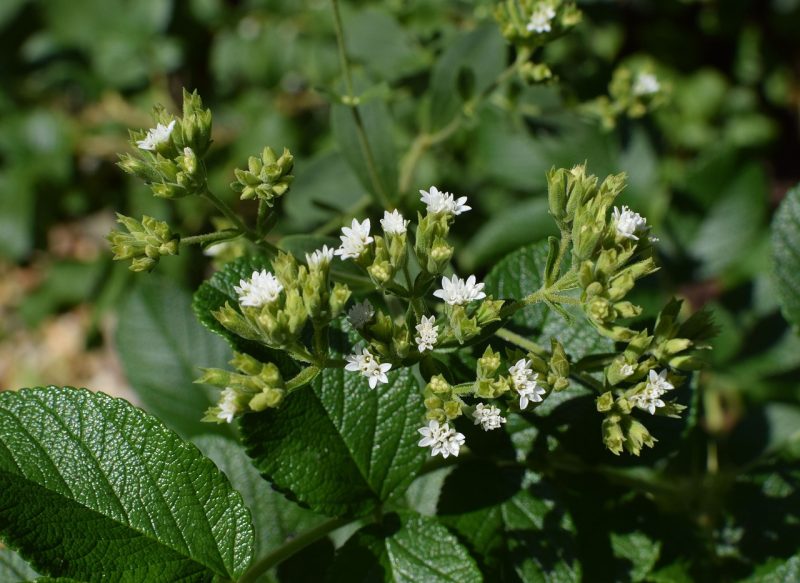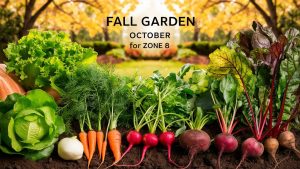Starting seeds in December not only satisfies the yearning for fresh produce but also paves the path for an early start once spring arrives. Thus, exploring what you can grow during this month opens the door to a fulfilling and resourceful indoor gardening experience.
Late Fall/Early Winter (After First Frost)

As we transition from the vibrant hues of fall to the tranquil, muted landscape of winter, many gardeners find the urge to connect with nature remains strong. December presents a unique opportunity for those who embrace indoor gardening, allowing them to cultivate plants that thrive in cooler temperatures.
This is particularly advantageous for those who live in regions where the growing season has been officially halted by frost. By starting certain plants indoors during this period, gardeners can enjoy a mini greenhouse effect, nurturing seedlings and greens that would otherwise be dormant outdoors.
In this delightful season of indoor gardening, the temperature fluctuations can be optimal for sprouting and establishing hardy plants, especially when conditions are carefully managed. A south-facing window can become an essential ally, providing welcome sunlight, while grow lights can supplement during shorter days. Additionally, creating a cozy microclimate is beneficial—using humidity trays or misting can foster the ideal environment for keeping seeds moist and sprightly.
Lettuce
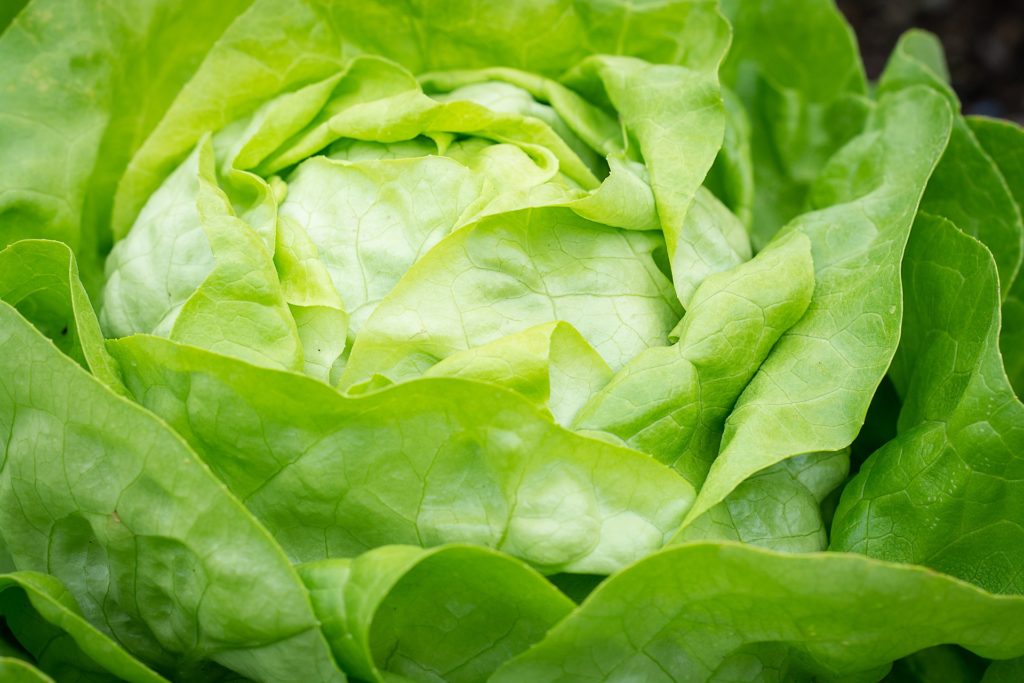
Lettuce is one of the most forgiving and quick-growing crops that can be sown indoors in December. Varieties such as butterhead and loose-leaf are particularly well-suited for indoor cultivation, allowing home gardeners to enjoy fresh greens throughout the winter months. One of the main advantages of growing lettuce indoors is its ability to flourish in cooler temperatures—ideal for a cozy kitchen or sunroom setting.
When planting lettuce, consider using small pots or seed trays filled with a quality potting mix that drains well. This ensures that the delicate roots of lettuce can expand freely without becoming waterlogged. When watered from the base, rather than overhead, you can help reduce the risk of mold and mildew—common culprits during the damp months of winter.
Lettuce germinates rather quickly, typically within 7 to 14 days, giving you the satisfaction of watching your efforts translate into green leaves in no time. As the seedlings grow, consider using a pair of scissors to selectively harvest “baby greens,” allowing the plants to continue growing. By doing so, you can enjoy a continuous supply of nutritious, crisp lettuce to add to your meals, making December a delightful month for fresh harvesting.
Sprouts
For the eager indoor gardener, sprouts are a fantastic choice for December planting, requiring minimal space and time while providing a burst of nutrition and flavor. Sprouts are essentially germinated seeds, typically of beans, peas, or grains, and are ready for harvest within a week. This makes them ideal for those looking for quick gratification and an abundance of fresh greens to enhance their winter diet.
To get started with sprouts, you only need a clean jar, some cheesecloth, and a handful of seeds from a reputable source. Popular choices include broccoli, alfalfa, and radish sprouts due to their robust flavor profiles and health benefits. After rinsing the seeds, simply place them in the jar, cover with cheesecloth, and soak in water for a few hours. Once drained, keep the jar tilted at an angle to allow excess moisture to escape and provide airflow to the seeds.
Rinse and drain your seeds twice a day to keep them moist but not soggy. Within days, you’ll notice them swelling and sprouting, signifying the wonders of growth even in the heart of winter. Sprouts can be enjoyed raw in salads, blended into smoothies, or used as a garnish to elevate a simple dish. They serve as a nutritious powerhouse packed with vitamins, enzymes, and antioxidants, ensuring your indoor garden provides ample health benefits while spicing up winter meals.
Microgreens
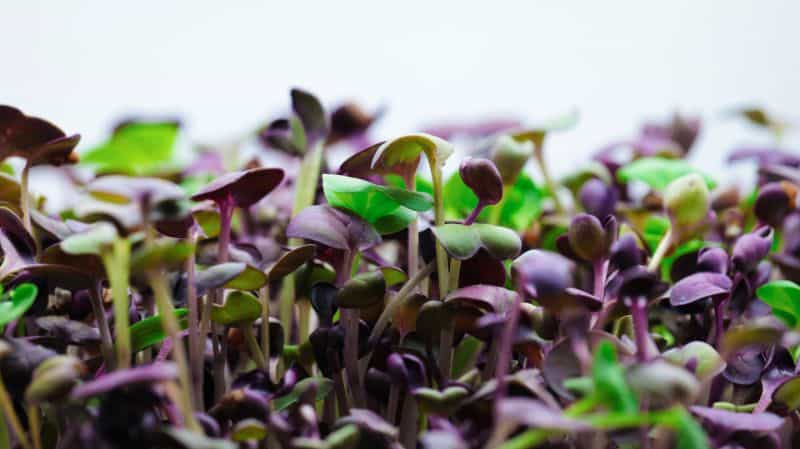
Microgreens are the ultimate choice for anyone looking to start an indoor garden in December. These young, edible greens are harvested just after the first true leaves have emerged, typically within 7 to 21 days post-sowing. What makes microgreens particularly appealing is their high nutrient density—packed with vitamins, minerals, and antioxidants, they can significantly boost the nutritional profile of your meals.
To cultivate microgreens indoors, you’ll need shallow trays, potting soil, and seeds suited for microgreen production. Popular varieties include arugula, sunflower, pea shoots, and radish microgreens, each bringing its unique flavor and texture to the table. Start by filling your trays with a few inches of quality potting mix, spreading seeds evenly, and covering them with a light layer of soil. Lightly misting the surface will help maintain moisture, crucial for rapid germination.
One of the key benefits of growing microgreens in December is their adaptability to low light conditions. While a sunny windowsill is ideal, microgreens will also thrive under artificial grow lights, making them accessible for those who struggle with limited natural light in winter. By caring for your microgreens and regularly harvesting them, you can continuously enjoy fresh greens throughout the chilly months, enhancing everything from sandwiches to salads with their vibrant crunch and rich flavors.
Indoor Herbs
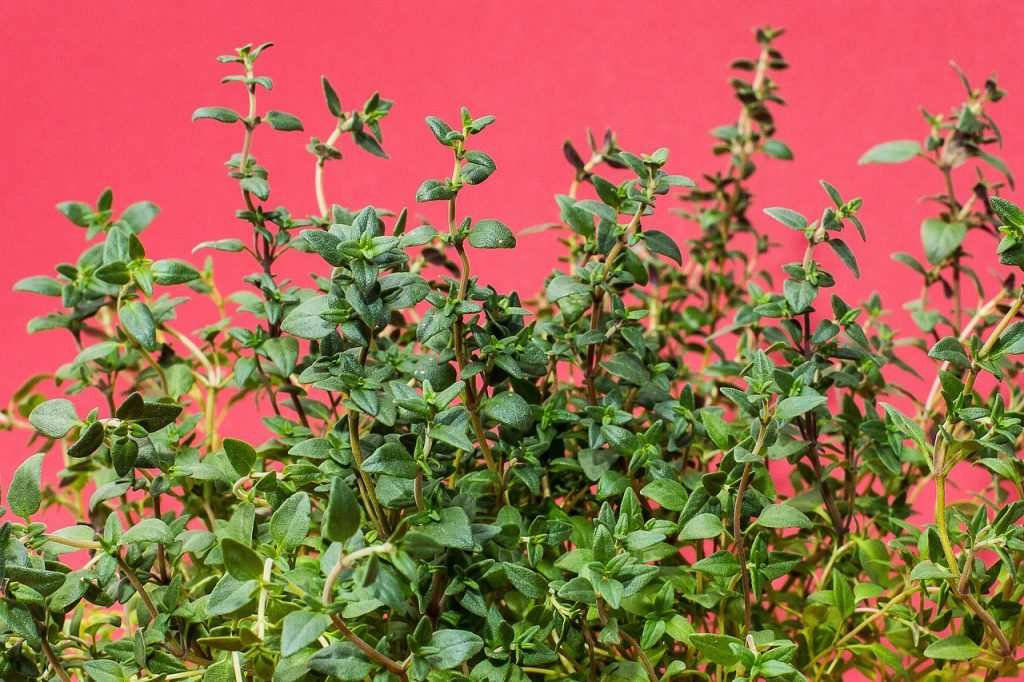
Adding indoor herbs to your December gardening repertoire is a delicious way to bring the essence of summer indoors. Herbs such as basil, parsley, cilantro, and thyme flourish well in indoor environments and can be grown successfully in pots on a sunlit windowsill or under grow lights. Starting these herbs in December not only provides a sustainable source of fresh flavor but also gives gardeners the joy of nurturing plants throughout the winter.
When planting indoor herbs, choose pots with adequate drainage holes and a high-quality, well-draining potting mix. Consider planting several types of herbs together in a larger container to create your own indoor herb garden. Regular watering is essential, but be careful not to overwater, as herbs prefer slightly drier soil compared to many leafy greens. Basic care, such as regular pruning, will stimulate growth and encourage bushier plants.
This indoor herb garden can be a culinary inspiration, as the fresh aromas and flavors will enliven your favorite winter dishes. Harvesting the leaves as you need them not only ensures freshness but also encourages the plants to grow more vigorously. Herbal teas, fresh sauces, and garnishes can all be created from your indoor garden, transforming the simplicity of December into a fragrant and flavorful experience.
Mid-Winter (8-12 Weeks Before Last Frost)
As mid-winter approaches and the calendar inches closer to spring, December is an ideal time to begin planning for the seeds that will be sown once the last frost has passed. Starting a variety of seeds indoors can give you a head start on your outdoor gardening, ensuring that your plants are strong and ready to thrive as the soil warms up. By sowing seeds about 8 to 12 weeks before the expected last frost date, you can maximize your growing season and enjoy bountiful results.
Crops such as tomatoes, peppers, eggplants, and various squash can be started indoors during this time. For these plants, begin by selecting high-quality seeds and seed-starting trays or pots filled with sterile seed-starting mix. Keep the soil consistently moist but not overly saturated to prevent damping off, a common issue in young seedlings. Providing warmth—especially for heat-loving plants like peppers—can significantly improve germination rates; using a heat mat can be a game changer in colder indoor environments.
Lighting is essential for successful seedling development. A south-facing windowsill is excellent, but if you don’t have enough light, supplement with fluorescent or LED grow lights positioned a few inches above the plants. As the seedlings grow, be sure to thin them out to prevent overcrowding, ensuring that the strongest plants have adequate space and light.
By December, you’re not just planning for the winter ahead—you’re setting the stage for a flourishing garden in spring. Investing time and care in nurturing these young plants indoors will yield fruits and vegetables long before the first warm breezes of spring arrive, creating anticipation for sunny days filled with gardening and harvests to come. Starting seeds indoors in mid-winter not only paves the way for abundant crops but also provides the perfect winter pastime that inspires gardeners to look forward to the coming seasons.
Leeks
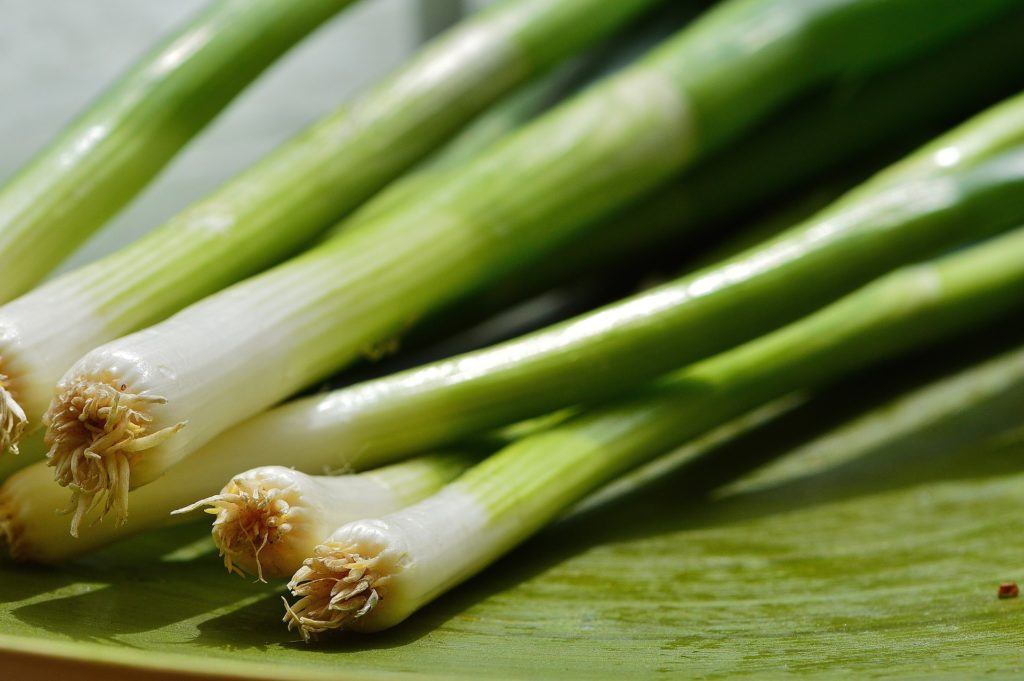
Leeks are an excellent choice for starting indoors in December, providing a flavorful addition to winter soups, stews, and other hearty dishes. These hardy alliums thrive in cooler temperatures, making winter sowing particularly advantageous. Unlike their quicker-growing relatives, leeks have a longer maturation period, typically requiring 100 to 120 days from seed to harvest. Starting them now ensures you have established plants ready to be transplanted outside once the frost threat has passed.
When starting leeks indoors, use seed trays filled with a quality seed starter mix that drains well. Sow the seeds about a half-inch deep and space them to allow for healthy root development. Given their slow germination—often taking two to three weeks—patience is key. A consistent moisture level is essential; however, avoid over-watering as it can lead to rot. Once the seedlings are about six inches tall, they can be hardened off and prepared for planting outdoors.
One of the distinctive benefits of leeks is their ability to tolerate frost and continue growing into the colder months. This means you can enjoy fresh leeks in your kitchen long after other crops are done for the season. Properly cared-for leeks can even be left in the ground throughout winter, allowing you to harvest them fresh as needed, which is perfect for filling your winter menu with vibrant, homegrown flavors.
Onions

Onions are another fantastic crop to start indoors in December, especially when growing varieties that require a longer growing season, such as yellow or red onions. Although short-day onion types are best for southern regions, starting the right long-day varieties indoors can set the stage for a bountiful harvest come spring. By beginning onion seeds indoors, you can ensure they’ll be ready to transplant in the early spring, maximizing the available growing time.
To grow onions indoors, sow seeds in seed trays or individual pots using a lightweight seed-starting mix. Plant the seeds about half an inch deep and keep them consistently moist but not waterlogged. Onions thrive in bright light, so placing them under grow lights or in a sunny window will encourage strong, healthy growth. Once the seedlings reach about 4 to 6 inches in height, they can be transplanted outdoors, ideally when the soil temperature consistently reaches 50°F (10°C) or higher.
Growing onions indoors during December also gives you the chance to experiment with various onion types—like sweet onions or shallots—cultivating flavors that can elevate your culinary creations. Their versatility in the kitchen means you’ll benefit from both their flavor and storage capabilities, as well-cured onions can last for several months, letting you enjoy your harvest long into the following seasons.
Celeriac
Celeriac, or celery root, is an often-overlooked vegetable that deserves a prominent place in your indoor garden this December. This unique root vegetable is known for its distinct flavor and versatility in many dishes, from soups to salads. Celeriac has a relatively long growing season, typically requiring around 120 days from seed to harvest, making early indoor sowing essential for a successful crop.
To cultivate celeriac indoors, start with seed trays filled with a rich seed-starting mix. Celeriac seeds are tiny, so scatter them evenly on the surface before pressing them gently into the soil, then cover them lightly. Given their slow germination, often taking three weeks or more, a bit of patience will be crucial. Keeping the soil consistently moist—while ensuring good drainage—is vital for promoting steady growth.
One of the exciting aspects of growing celeriac is its adaptability to cooler conditions. As they mature indoors, you can easily provide them with ample light and warmth, helping to build strong seedlings. Once the danger of frost has passed, hardened-off seedlings can be transferred to the garden, where they will continue to develop their flavorful roots.
Harvesting celeriac can also be rewarding, as you can use not only the roots but also the leafy tops in culinary applications. This dual-purpose nature makes celeriac a pragmatically nutritious choice for winter gardening, bridging the gap between the cold months and the upcoming growing season. Starting celeriac indoors in December not only enriches your kitchen repertoire but also offers a unique gardening experience that is sure to delight both novice and experienced gardeners alike.
Celery
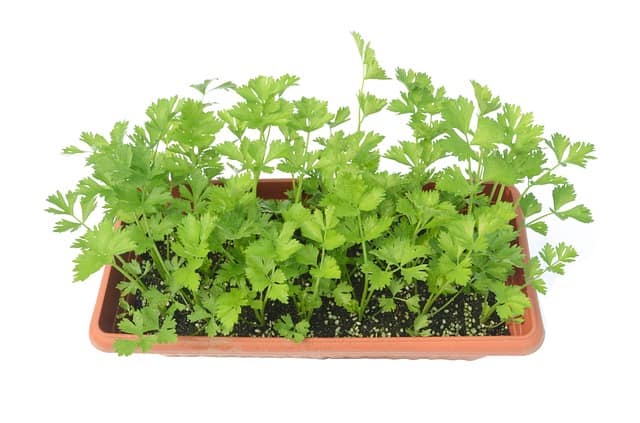
Celery is an exceptional choice for indoor planting in December, particularly due to its cool-season tolerance and versatility in the kitchen. These crisp stalks not only add a refreshing crunch to salads and soups but also pack a nutritional punch, being a source of vitamins K and C, potassium, and dietary fiber. Growing celery requires a bit more attention than some other vegetables, but the rewards of homegrown celery are well worth the effort.
To start celery indoors, begin with seed trays filled with a high-quality seed-starting mix. Celery seeds are small and slow to germinate, typically taking 14 to 21 days to sprout, so patience is vital. Lightly press the seeds into the soil without covering them too deeply, as they require light for germination. Make sure to keep the soil consistently moist—celery thrives in a humid environment—and consider using a humidity dome or plastic wrap over the trays to maintain moisture during the germination phase.
Once your seedlings are a few inches tall, they will need to be thinned out to prevent overcrowding, allowing the strongest plants to flourish. Once the risk of frost has passed in spring, hardened-off seedlings can be transplanted outdoors. Celery loves nutrient-rich soil, so consider incorporating compost into your garden bed before planting.
Growing celery requires diligent watering, as it has a high water content and prefers moist conditions. If you’re short on space, celaring them in large pots indoors is an option as well. During the winter months, harvesting fresh celery stalks offers a delightful way to enhance holiday dishes and maintain a connection to gardening, even while the outdoor garden lies dormant.
Stevia
Stevia, a sweetener derived from the leaves of the Stevia rebaudiana plant, is increasingly popular among health-conscious individuals looking for natural sugar alternatives. Starting stevia indoors in December is a fantastic option, as this perennial herb can bloom in your indoor garden year-round, providing a steady supply of sweetness for your culinary creations and beverages.
To grow stevia indoors, begin by obtaining quality seeds or live plants from a reputable nursery. If starting from seeds, use seed trays filled with a well-draining potting mix and plant the seeds about an eighth of an inch deep, lightly covering them with soil. Keeping the soil consistently moist and maintaining a warm environment—ideally around 70°F (21°C)—will help promote germination, typically occurring within 14 to 21 days.
Once seedlings emerge, provide plenty of bright light, preferably through grow lights if natural light is limited during the short days of winter. As the plants grow, pinch back the tips to encourage bushier growth and stronger stems. Stevia plants can be transplanted into larger pots as they mature, ensuring they have the space necessary to thrive.
Not only is stevia a fabulous sweetener free of calories, but it also has been shown to possess potential health benefits, including anti-inflammatory and antioxidant properties. Harvesting the leaves for use is simple; just snip off the leaves as needed and enjoy their natural sweetness—which is far more flavorful than the processed alternatives. Starting your own stevia plants indoors can be a gratifying way to enhance your cooking and baking, all while enjoying the process of growing this wonderful herb.
Rosemary
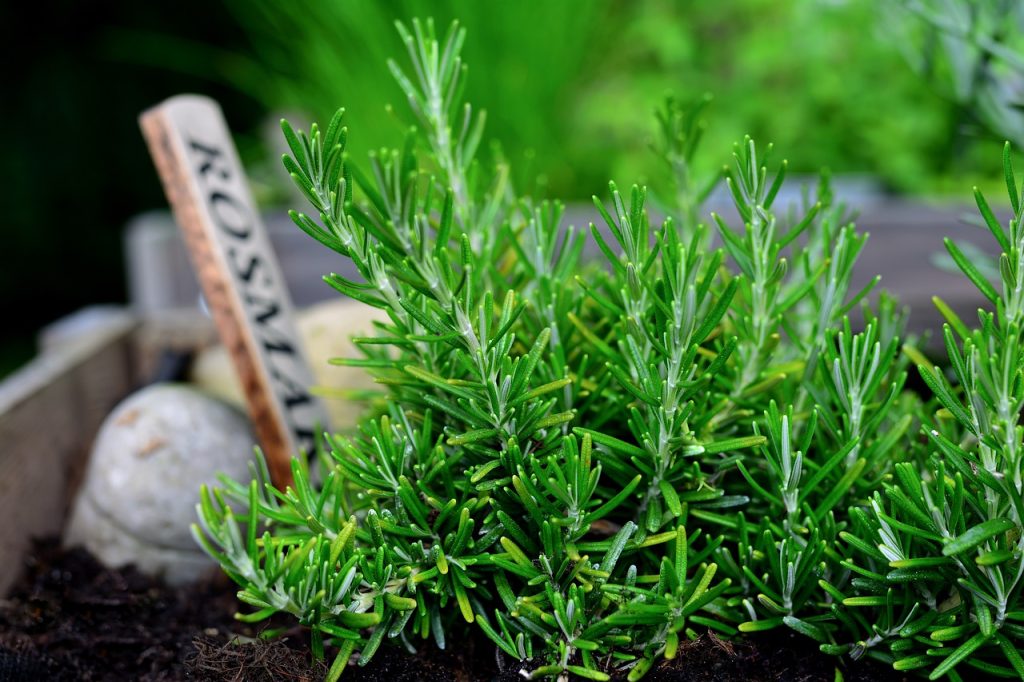
Rosemary, with its aromatic leaves and culinary versatility, is another ideal candidate for indoor cultivation in December. This perennial herb thrives in warm, sunny conditions and can be easily grown indoors, allowing you to have a fresh supply at your fingertips during the winter months. Beyond its savory flavor, rosemary is also known for its potential health benefits, including boosting memory and concentration.
Start rosemary indoors by using either seeds or a cutting from an existing plant. If using seeds, plant them in shallow trays or pots filled with a well-draining potting mix, lightly covering the seeds with soil. Keep the soil moist but not soggy, and place the trays in a warm spot with plenty of indirect sunlight. Germination can take anywhere from two weeks to several months, so patience is key. Alternatively, if you start with a cutting, dip the end in rooting hormone, place it in a small pot with moist potting soil, and provide humidity by covering with a plastic bag until roots develop.
Once your rosemary plants are established, they’ll appreciate plenty of light, so positioning them near a sunny window or supplemented with grow lights is ideal. Rosemary plants prefer drier conditions, so be careful not to overwater; allowing the top inch of soil to dry out between waterings will help prevent root rot.
Harvesting rosemary can be a sensory delight; simply pinch off sprigs as needed to infuse your dishes with its fragrant flavor. This robust herb is wonderful in roasts, marinades, and bread, and can also be used in homemade herbal teas. With proper care, your indoor rosemary plants will flourish throughout the winter, providing both fresh herbs and the joy of gardening during the season’s quiet months.
Lavender
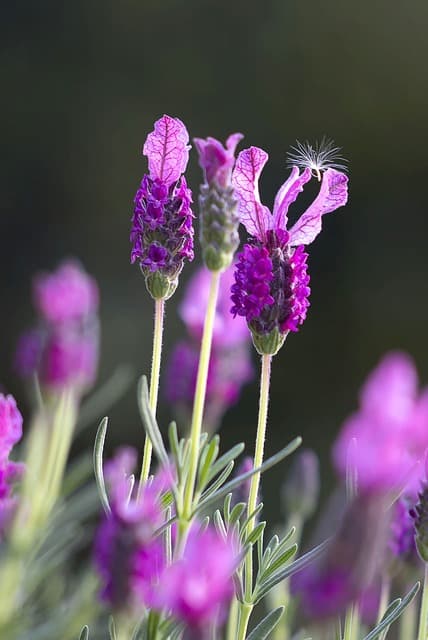
Lavender, with its exquisite fragrance and stunning purple blooms, is not only a beautiful addition to any indoor garden but also offers a range of culinary and aromatic benefits. Starting lavender indoors in December allows gardeners to cultivate this hardy perennial before the warmer months arrival and ensures the plants are well-established by the time they are ready to go outside.
To grow lavender from seed indoors, begin by using a light, well-draining potting mix and shallow trays. Lavender seeds benefit from a process known as cold stratification, where they are exposed to cold temperatures to enhance germination. To do this, you can mix the seeds with a bit of moist sand and place them in the refrigerator for about two weeks before planting. Once ready, sow the seeds on the surface of the prepared trays, lightly pressing them in without covering completely, as they require light to germinate.
Lavender prefers bright and direct light, so placing the trays in a south-facing window will aid in the growth process. Once the seedlings appear—generally within two to three weeks—thin them out to ensure adequate spacing for healthy development. After a few months and with proper care, such as ensuring well-draining soil and periodically rotating the plants for even light exposure, they will be ready for transplanting outdoors after the last frost.
Growing lavender isn’t just beneficial for its stunning aesthetic appeal; it can also add flavor to various dishes and beverages. Dried lavender flowers can be infused into teas, desserts, and even savory dishes, contributing a distinctive flavor that pairs wonderfully with chamomile and honey. Plus, the enticing scent of lavender is known to promote relaxation and improve mood—making it a perfect plant for your indoor space during the dark months of winter.
Strawberries

Growing strawberries indoors during December is a satisfying way to enjoy fresh fruit year-round. These delicious berries are not only a delightful treat but also an excellent source of vitamin C, manganese, and antioxidants. By starting strawberries indoors, you can ensure that you have a steady supply of homegrown berries by the time the outdoor garden come alive in spring.
To begin, select a suitable container, preferably one that is at least 12 inches deep to accommodate the strawberry plants’ root systems. Fill it with a quality potting mix that provides good drainage and aeration. Choose everbearing or day-neutral strawberry varieties, which will produce fruit continuously throughout the growing season, even if started in winter. Plant the strawberry seedlings, making sure to leave the crowns slightly above the soil level to prevent rot.
Strawberries thrive in bright light; therefore, positioning your container near a sunny window, or utilizing LED grow lights, will enhance plant development. Regular watering is crucial, as strawberry plants do not tolerate drought well. Implement a watering routine that keeps the soil consistently moist but not waterlogged. Adding a layer of mulch on the soil surface can help retain moisture and suppress weeds.
Indoors, strawberries typically bloom in about six to eight weeks, leading to fruit production in approximately four to six weeks after flowering. Harvesting strawberries can be an exhilarating experience, bringing a taste of summer into your winter kitchen. Enjoy them fresh, add them to smoothies, or make homemade jams and desserts—there’s something delightful about the sweet, juicy flavor of freshly picked strawberries that makes winter gardening worthwhile.
Bell Peppers
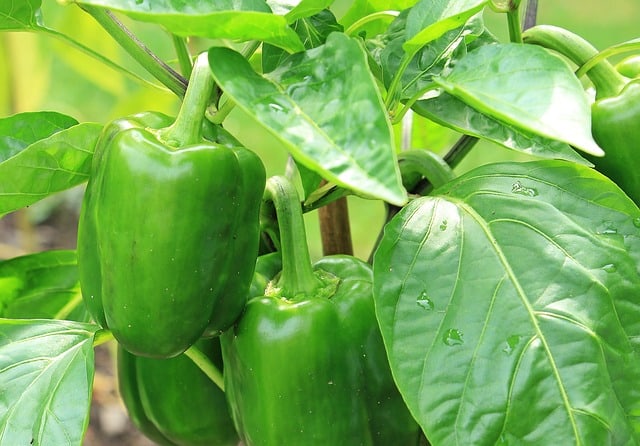
Bell peppers are a colorful and nutritious addition to your indoor gardening efforts this December. Known for their vibrant colors and crisp texture, these versatile veggies are rich in vitamins A and C, making them an excellent choice for a health-conscious kitchen. Starting bell peppers indoors now allows you to get a jumpstart on your spring garden, ensuring you have a thriving crop ready to be transplanted after the last frost.
Begin by selecting high-quality seeds—consider choosing a variety that suits your taste, such as sweet red, yellow, or green bell peppers. Use seed trays filled with a sterile seed-starting mix, planting the seeds about a quarter of an inch deep. Because bell peppers enjoy warmth, place trays in a location that maintains a consistent temperature of around 70-80°F (21-27°C). Using a seedling heat mat can be especially helpful for germination, which typically takes 7 to 14 days.
As seedlings emerge, ensure they receive plenty of light to prevent them from becoming leggy. If natural light is limited during winter months, supplement with grow lights, keeping them just a few inches above the plants. Once the seedlings develop their first set of true leaves, thin them to allow for proper spacing.
Fertilization is essential as bell pepper plants grow; use a balanced fertilizer every couple of weeks to promote healthy development. When nighttime temperatures consistently rise above 50°F (10°C) and the plants are sturdy enough, it’s time to transplant them outdoors. Your care and effort will be rewarded when the bell peppers begin to form, turning from green to the vibrant colors associated with your chosen variety.
Hot Peppers
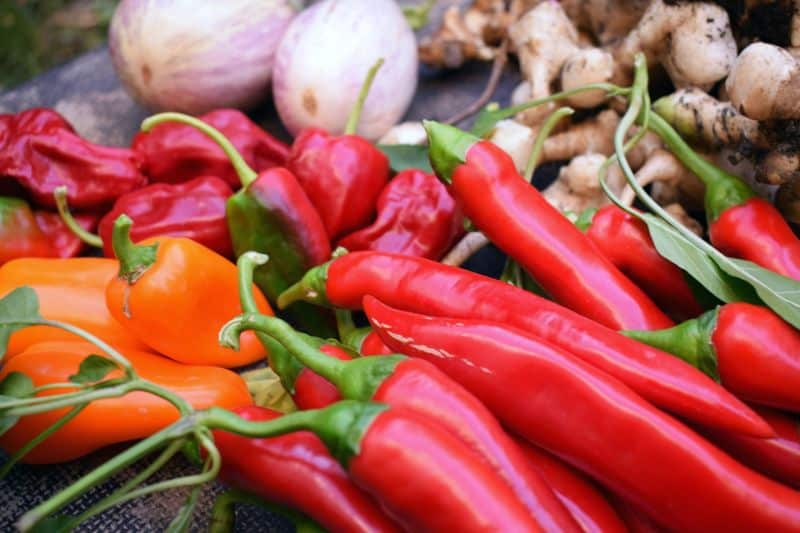
Hot peppers are a fantastic and fiery choice for indoor planting during December. Whether you enjoy the subtle heat of banana peppers or the intense burning sensation of habaneros, growing hot peppers indoors allows you to experiment with various flavors and heat levels throughout the winter months. These peppers are packed with nutrients, including vitamins A, C, and E, as well as capsaicin, which has been linked to various health benefits.
To start hot peppers indoors, choose a variety that suits your taste preferences and growing conditions. Use a seed-starting mix in seed trays or small pots, planting seeds approximately a quarter of an inch deep. Hot pepper seeds thrive in warm environments, so maintaining a consistent temperature of around 75-85°F (24-29°C) is crucial. The seeds typically germinate in 14 to 21 days, and using a heat mat can significantly enhance germination success.
Once seedlings appear, they need ample light for proper development. Natural sunlight may be limited during winter, so incorporating grow lights that can provide a full spectrum of light will help prevent leggy growth. As soon as seedlings develop their first true leaves, thin them or transplant them to larger pots, ensuring each plant has enough room to grow.
Hot peppers can be demanding in terms of care; they require consistent watering and nutrient-rich soil. Fertilize every couple of weeks using a balanced fertilizer to promote healthy growth and fruit set. Keep a close eye on the plants for any signs of pests or diseases, as peppers can be susceptible to aphids or fungal issues in indoor environments. With proper care, you can look forward to a bountiful harvest of vibrant, spicy peppers that can be used in a myriad of dishes, from salsas to stir-fries, providing flavor and a healthful kick to your winter meals.
Late Winter/Early Spring (6-8 Weeks Before Last Frost)
December is also the perfect time to plan and initiate your late winter and early spring crops. Starting certain plants now can give you a significant head start. Many vegetables can be started indoors 6-8 weeks before the last expected frost, allowing them to establish strong root systems before being transplanted outside. This method is particularly beneficial for crops that flourish in cool weather, producing robust growth once planted in the garden.
Popular choices to start indoors during this period include broccoli, Brussels sprouts, and cauliflower—each of these brassicas thrives in cooler conditions and can be frost-tolerant. Begin by using seed trays filled with a quality potting mix, ensuring good drainage. Sow the seeds following specific depth guidelines, usually around ¼ to ½ inch deep, depending on the crop.
These seeds typically germinate within 7 to 14 days, requiring consistent moisture and ample light. If you’re using grow lights, keep them positioned just a few inches above the seedlings, adjusting as they grow taller. Once seedlings have developed at least two sets of true leaves, it’s essential to start acclimating them to outdoor conditions—this process, known as hardening off, typically occurs about two weeks before the last frost date.
As temperatures begin to rise, these young plants can be transitioned to the garden, where they’ll continue growing into healthy, tasty vegetables. By starting your late winter and early spring crops indoors in December, you can take full advantage of the growing season and enjoy a plentiful harvest early in the year.
Kale

Kale is a nutritionally rich leafy green that thrives in cooler temperatures, making it ideally suited for indoor planting in December. Known for its robust flavor and versatility, kale is packed with vitamins K, A, and C, along with a healthy dose of fiber and antioxidants. By starting kale indoors, you can enjoy fresh greens throughout the chilly winter months, providing not just a nutritious addition to your meals but also a delightful gardening experience.
To grow kale indoors, choose a container at least 12 inches deep and fill it with high-quality potting soil that drains well. Sow the seeds about ½ inch deep, spacing them adequately to allow for their spread as they mature. Keep the soil consistently moist but not waterlogged, and place the containers in an area that receives plenty of sunlight—ideally 6 to 8 hours of direct sunlight daily. If natural light is insufficient, consider supplemental grow lights to ensure healthy growth.
Kale seeds typically germinate within 7 to 10 days. Once seedlings are a few inches tall, you can thin them to allow for proper spacing, enabling each plant ample room to grow. Kale is relatively low-maintenance, but it benefits from regular feeding with a balanced liquid fertilizer every few weeks. As they grow, you can begin harvesting the outer leaves once they reach a desirable size while allowing the inner leaves to continue growing.
The beauty of kale is that it can withstand cold temperatures; in fact, many gardeners find that the flavor becomes sweeter after a frost. By nurturing your kale indoors during December, you’ll not only cultivate a provision of fresh, flavorful greens but also create a vibrant indoor space to combat the winter blues. Use your
Cauliflower
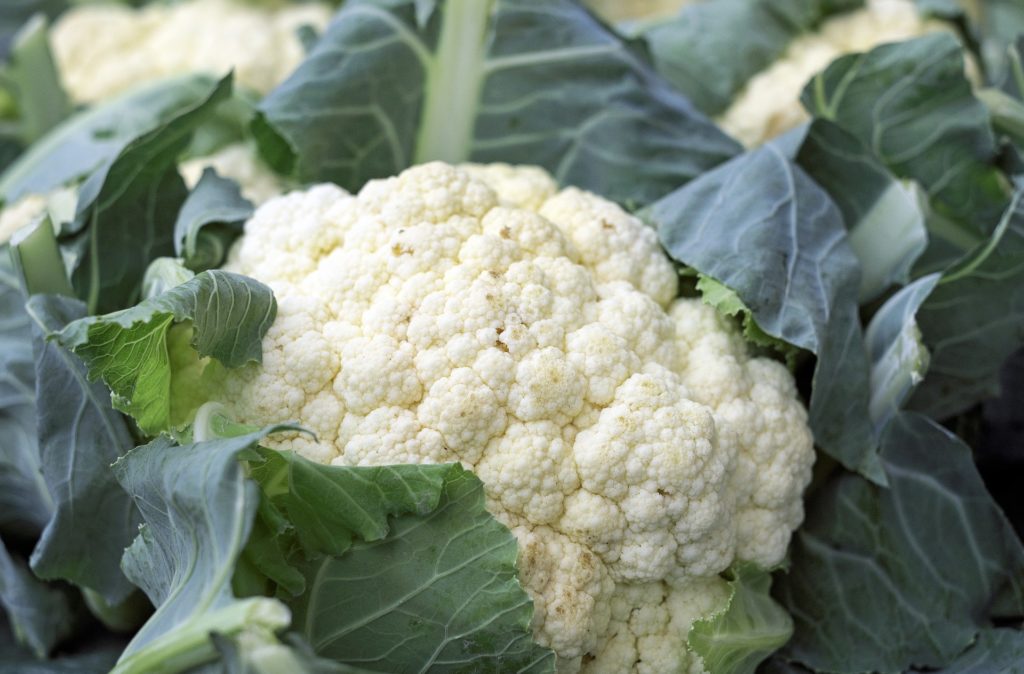
Cauliflower is an excellent candidate for indoor planting in December, especially for gardeners who enjoy rewarding challenges. This cruciferous vegetable is not only a versatile ingredient in various recipes—from stir-fries to hearty casseroles—but also delivers a wealth of nutrients, including vitamins C, K, and several B vitamins. Starting cauliflower indoors gives you the opportunity to cultivate strong seedlings ahead of spring, ensuring robust plants ready to thrive outdoors after the last frost.
Starting cauliflower involves a careful approach, as the seeds are quite small and sensitive to growing conditions. Use seed trays or small pots filled with a sterile seed-starting mix that drains well. Sow the seeds about ¼ to ½ inch deep and keep the soil moist but not soggy. Cauliflower prefers cool temperatures, so aim for a steady indoor temperature of around 60-70°F (15-21°C) to promote healthy germination, which typically occurs within 7 to 12 days.
Providing ample light is crucial for cauliflower’s growth. If natural sunlight is limited in your home, consider utilizing grow lights to ensure that your seedlings receive at least 12-16 hours of light each day. Once the seedlings have developed their first true leaves, you can transplant them into individual pots to allow for further spacing and growth.
As your cauliflower plants mature, it’s important to keep their environment stable. Consistent watering, proper fertilization with a balanced fertilizer every few weeks, and regular monitoring for pests will contribute to healthy growth. When the seedlings reach about 4-6 weeks old and are sturdy, you can harden them off to prepare for outdoor transplanting. With attention and care, you’ll soon enjoy the satisfaction of nurturing cauliflower from seed to harvest, enhancing your winter meals with homegrown goodness.
Broccoli
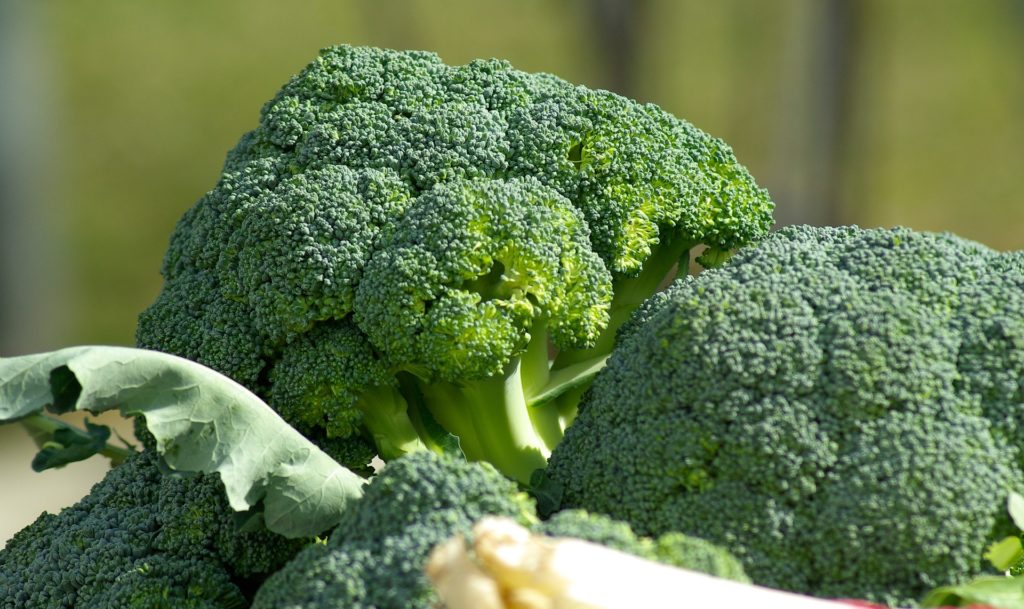
Broccoli, known for its high fiber content and abundance of vitamins and minerals, is another ideal vegetable to start indoors in December. This nutrient-packed cruciferous vegetable is celebrated not just for its health benefits but also for its delightful flavor and versatility in the kitchen. Starting broccoli indoors allows you to establish a healthy plant that can provide an early harvest in the spring or even throughout winter if temperatures permit.
To kick off the indoor growing process, choose a container that provides good drainage and fill it with a quality potting mix. Plant your broccoli seeds approximately ½ inch deep and give them sufficient spacing—3 to 4 inches apart—to avoid overcrowding. A temperature range of 65-75°F (18-24°C) suits broccoli seedlings well, making your indoor space an excellent environment for germination, which usually occurs within 7 to 14 days.
Light is vital for broccoli; place the containers near a sunny window or under grow lights, ensuring they receive around 12-16 hours of light per day. As the seedlings grow, monitor water levels closely; broccoli requires regular watering to keep the soil consistently moist but not waterlogged, as soggy conditions can lead to root rot.
As the seedlings develop their true leaves, thin them out or transplant them to individual pots to allow for stronger growth. Around 4-6 weeks after sowing, when the seedlings are sturdy enough, begin the hardening-off process, gradually exposing them to outdoor conditions. Rich in nutrients, fresh broccoli florets can be harvested as soon as they reach a desirable size. With your indoor efforts, you’ll be rewarded with vibrant green bunches of broccoli, ready to be steamed, roasted, or used in your favorite dishes.
Tomatoes
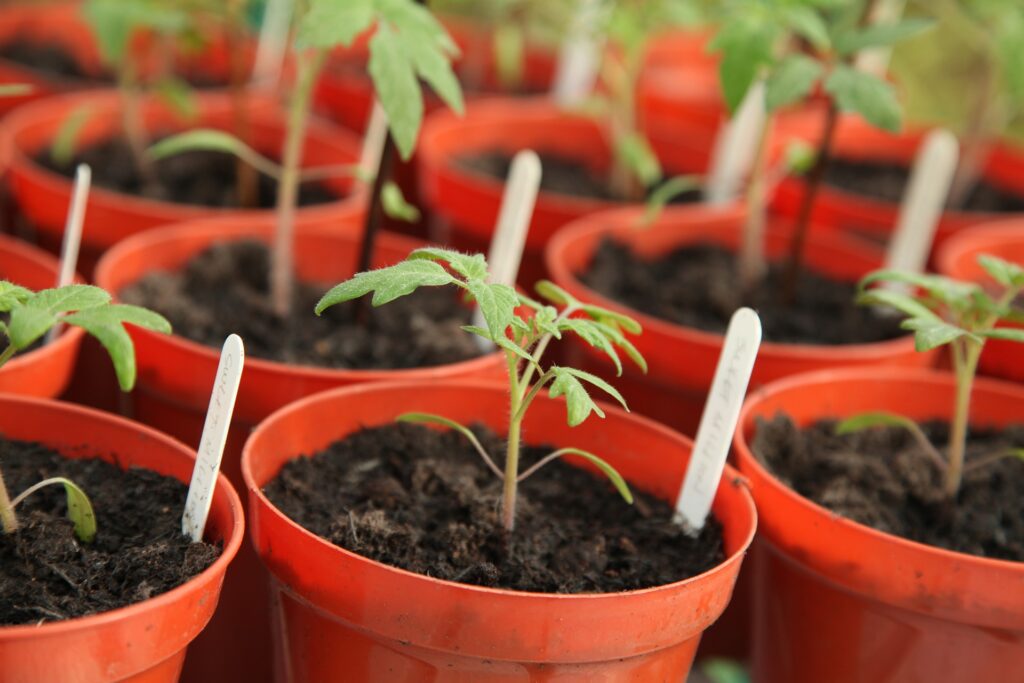
Starting tomatoes indoors in December might seem counterintuitive, but it provides an excellent opportunity to jump-start your growing season. Tomatoes are beloved for their sweet and succulent fruit, providing a culinary staple that can elevate countless dishes. Besides being delicious, they are also rich in vitamins C and K, folate, and potassium, making them a nutritious choice for your indoor garden.
Begin by selecting a variety that suits your taste and growing conditions—determinate varieties tend to be bushier, while indeterminate types will continue to grow and produce throughout the season. Use seed trays filled with a light potting mix and sow the seeds about ¼ inch deep. Tomatoes thrive in warmer conditions, so aim for a germination temperature around 70-80°F (21-27°C). Germination typically takes 5-10 days, and a seedling heat mat can be a valuable tool to maintain optimal warmth.
Once your tomato seedlings emerge, they will require plenty of light. Position them in a sunny south-facing window or employ grow lights to provide adequate illumination for around 12-16 hours daily. As the plants grow, it’s essential to ensure they don’t become leggy due to insufficient light, so consider rotating the seedlings regularly for even growth.





